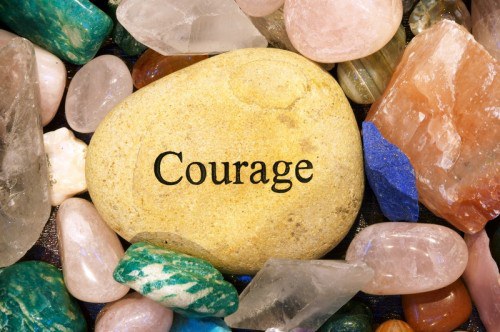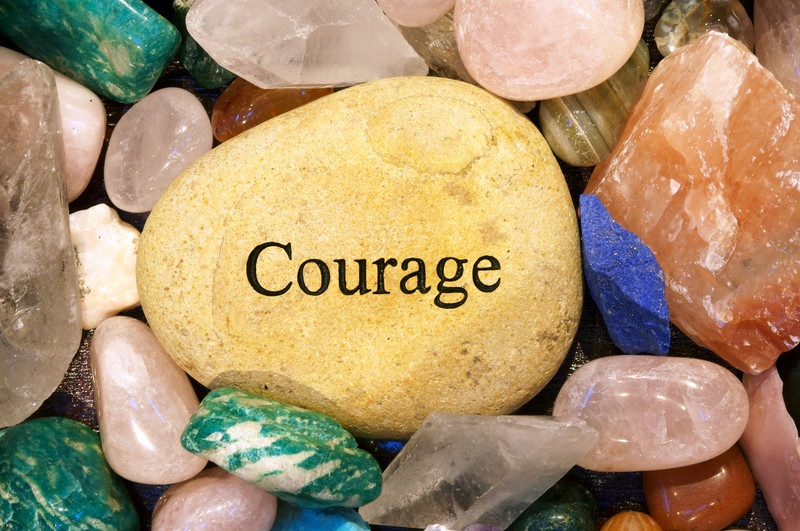Courage to Face Our Fears
We all have fears. Many of us have experienced times when we feel stuck because we are afraid; scared to take a test, go to the doctor, share our worries, get a shot, make a certain phone call, go on that job interview, _______ (fill in the blank). The good news is that we can use tools that foster resilience and help us face our fears. These are acts of courage. Courage, as defined by Webster’s Dictionary, is “the mental or moral strength to venture, persevere, and withstand danger, fear, or difficulty.” Courage does not imply doing something without fear.
“After interviewing hundreds of people about the truths of their lives – the strengths and the struggles – I realized that courage is one of the most important things that resilient people share in common.” Brené Brown
Resilience
The psychological definition of resilience is “an individual’s tendency to cope with stress and adversity.” A Houston therapist shared the following story recently of her daughter, Madison, a thirteen year old girl who faced her fears with courage as she used tools she has learned to help her become more resilient.
 Madison went to the doctor with her mother for her annual wellness check. Madison told the doctor about a wart that had been on her leg for about six months. Her parents had used over-the-counter medications to treat the wart, but it did not seem to be helping. Madison admitted that she was terrified at the thought of getting the wart removed. She was scared of getting a shot, as well as the the pain she knew she would feel. The doctor told her that it would be best to remove it, but Madison said, “No.” Madison called her mother, Debbie, into the room, and Debbie explained that it was important to follow the doctor’s advice. Debbie knew that Madison was frightened, but she and Madison had talked on a number of occasions about tools that helped face her fears. Madison squeezed her mother’s hand with tears in her eyes. She said she was still scared, but gave the doctor permission.
Madison went to the doctor with her mother for her annual wellness check. Madison told the doctor about a wart that had been on her leg for about six months. Her parents had used over-the-counter medications to treat the wart, but it did not seem to be helping. Madison admitted that she was terrified at the thought of getting the wart removed. She was scared of getting a shot, as well as the the pain she knew she would feel. The doctor told her that it would be best to remove it, but Madison said, “No.” Madison called her mother, Debbie, into the room, and Debbie explained that it was important to follow the doctor’s advice. Debbie knew that Madison was frightened, but she and Madison had talked on a number of occasions about tools that helped face her fears. Madison squeezed her mother’s hand with tears in her eyes. She said she was still scared, but gave the doctor permission.
These are some of the tools Madison practiced to build her courage:
- Get the facts. Madison asked a number of questions about the procedure until she was satisfied that she knew exactly what to expect.
- Seek out connection. Madison called her mother into the room for support and comfort. She did not have to face her fears alone.
“Courage is like—it’s a habitus, a habit, a virtue: You get it by courageous acts. It’s like you learn to swim by swimming. You learn courage by ‘couraging.’ The same is true for compassion and connection. We invite compassion into our lives when we act compassionately toward ourselves and others, and we feel connected in our lives when we reach out and connect.” Brené Brown
- Laughter is good medicine. Madison and her mom told silly jokes to the doctor during the procedure. Debbie reminded Madison that laughter temporarily relieves pain and also calms anxiety.
- Be creative. As Madison began to relax, she began to sing a silly song with a number of complicated verses. Her song made everyone laugh and the tension melted in the room.
After the procedure was finished, Debbie asked Madison what she learned about herself. Madison replied, “I am braver than I thought I was.”
Face Our Fears
The next time something scary gets in the way, we can learn some tips from a young teenager on how to be brave. Here is a list of tools we can practice that build resilience and help us be courageous.
Brené Brown: The Gifts of Imperfection
Bron Roberts: 10 Top Tips for De-stressing and Building Resilience










